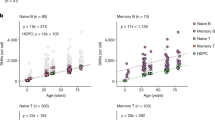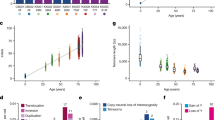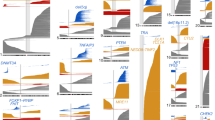Abstract
A means of measuring in vivo mutations in man would be valuable in assessing the importance of mutation in ageing and human disease and for monitoring individuals exposed to environmental mutagens and carcinogens. The hypoxanthine–guanine phosphoribosyl transferase (HGPRT) locus has been used to study mutagenesis in cultured mammalian (and other) cells1; clones are selected by their ability to grow in the presence of the purine analogue, 6-thioguanine (6-TG). Such clones are almost always HGPRT− and are therefore probably the progeny of a mutant cell. This system has been applied to human lymphocytes by using autoradiography to detect single mutant cells2–6. This approach probably does detect mutant cells, particularly if their number is increased, but the results obtained are variable and rather imprecise4,5. Also, the technique does not allow isolation of clones, thus the mutational origin of thioguanine-resistant (TGr) cells cannot be determined as the gene product, HGPRT, cannot be measured. Previous methods for cloning peripheral blood lymphocytes (PBL) have been so inefficient that detection of TGr lymphocytes has not been practicable. We have cloned PBL by a technique which is highly efficient (20–60% of PBL form a clone) and results in large clones of 103–104 cells that are readily scored using an inverted microscope6,7. We report here that the in vivo mutation frequency is of the order of that observed for human fibroblast lines cultured in vitro1.
This is a preview of subscription content, access via your institution
Access options
Subscribe to this journal
Receive 51 print issues and online access
$199.00 per year
only $3.90 per issue
Buy this article
- Purchase on Springer Link
- Instant access to full article PDF
Prices may be subject to local taxes which are calculated during checkout
Similar content being viewed by others
References
Caskey, C. T. & Kruh, G. D. Cell 16, 1–9 (1979).
Strauss, G. H. & Albertini, R. J. Mutat. Res. 61, 353–379 (1979).
Evans, H. J. & Vijayalaxmi Nature 292, 601–605 (1981).
Morley, A. A. et al. Mutat. Res. 95, 363–375 (1982).
Dempsey, J. L. & Morley, A. A. Mutat. Res. (in the press).
Morley, A. A., Trainor, K. J. & Seshadri, R. Expl Haemat. 10 (Suppl. 11), 119 (1982).
Morley, A. A., Trainor, K. J. & Seshadri, R. Expl Haemat. (in the press).
Taswell, C. J. Immun. 126, 1614 (1981).
le Bruyn, C. H. M. M., Oei, T. L. & Hösli, P. Biochem. biophys. Res. Commun. 68, 483 (1976).
Albertini, R. J. et al. Proc. natn. Acad. Sci. U.S.A. 79, 6617–6621 (1982);
Author information
Authors and Affiliations
Rights and permissions
About this article
Cite this article
Morley, A., Trainor, K., Seshadri, R. et al. Measurement of in vivo mutations in human lymphocytes. Nature 302, 155–156 (1983). https://doi.org/10.1038/302155a0
Received:
Accepted:
Issue Date:
DOI: https://doi.org/10.1038/302155a0
This article is cited by
-
Selection against blood cells deficient in hypoxanthine phosphoribosyltransferase (HPRT) in Lesch-Nyhan heterozygotes occurs at the level of multipotent stem cells
Human Genetics (1995)
-
Detection of deletion mutations extending beyond the HPRT gene by multiplex PCR analysis
Somatic Cell and Molecular Genetics (1994)
-
DNA sequence changes in aging: How frequent, how important?
Aging Clinical and Experimental Research (1990)
Comments
By submitting a comment you agree to abide by our Terms and Community Guidelines. If you find something abusive or that does not comply with our terms or guidelines please flag it as inappropriate.



